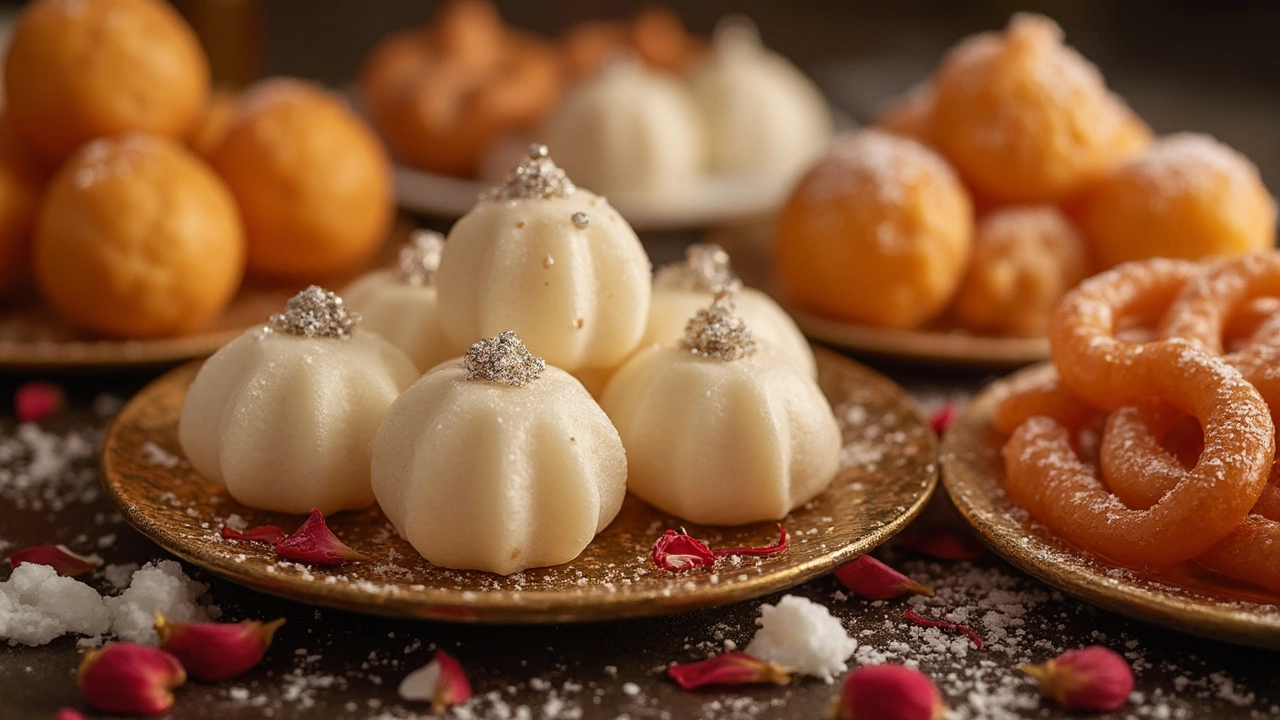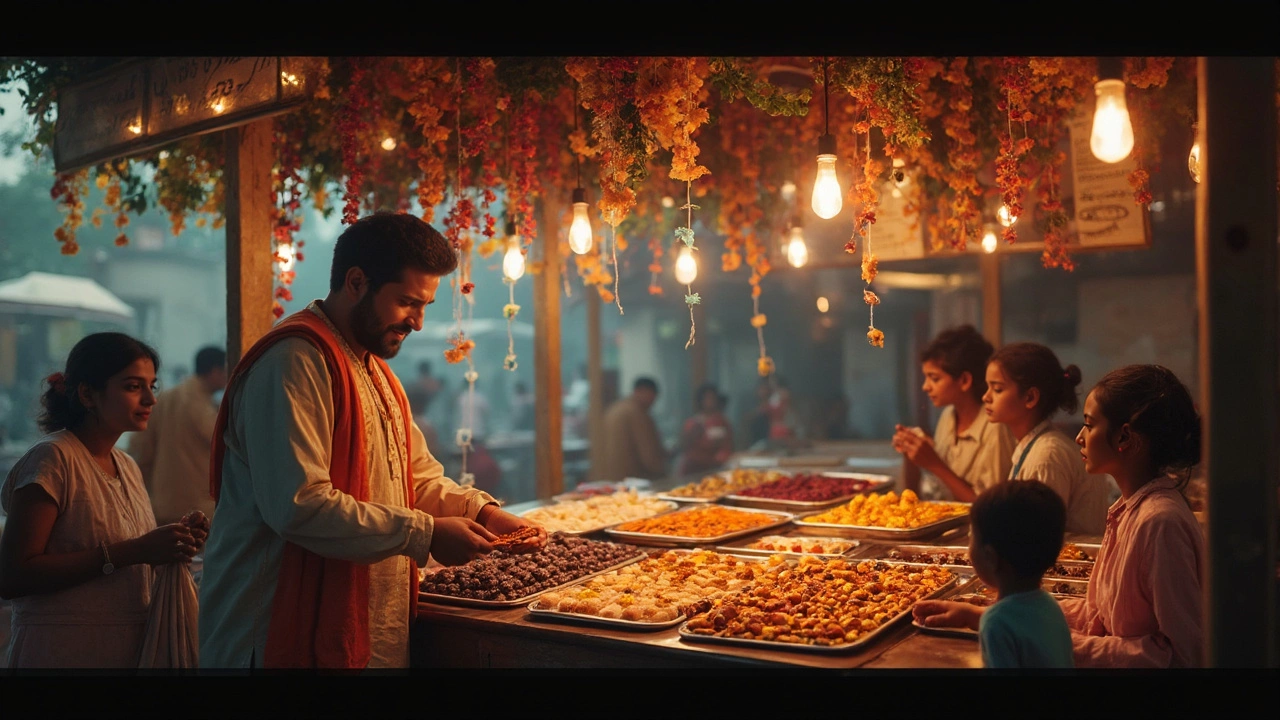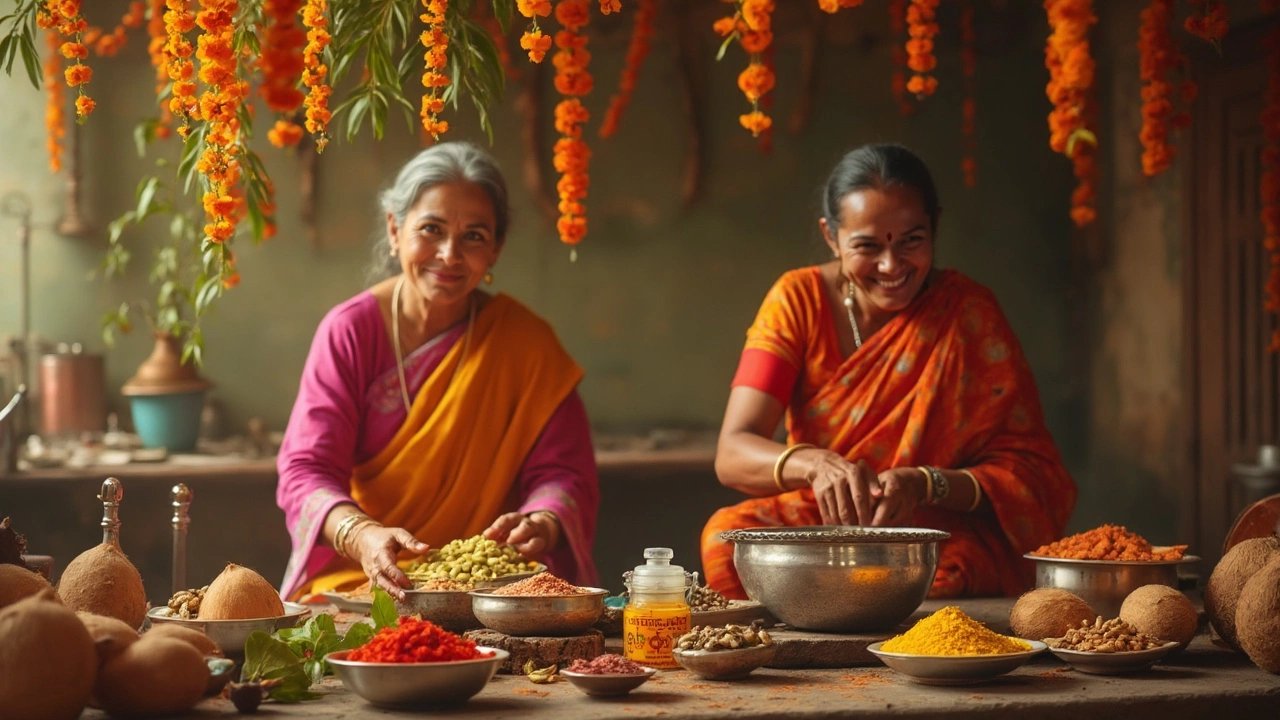Some flavors just stick with you forever. Close your eyes and you can practically taste the memory—sticky gulab jamun soaked with syrup, creamy ras malai, or that crumbly barfi dusted with pistachios. Anyone who’s been tempted by an Indian sweet has probably wondered: what is that magical base that makes so many mithais (sweets) so unforgettable? The answer might surprise you: there’s no single star, but three big players take center stage—milk, sugar, and ghee. Everything else, like cardamom, saffron, or coconut, is just supporting magic for these essentials. Sure, almost every part of India claims to have invented laddus or jalebi, but nearly every sweet’s core comes from that holy trinity.
The Heart of Indian Sweets: Milk, Sugar, and Ghee
Let’s get a little nerdy here—almost 70% of traditional Indian sweets come from milk, and not just plain old milk but milk in its many personalities: khoya (reduced milk solids), chenna (cottage cheese), or paneer (pressed fresh cheese). East India swears by chenna for masterpieces like rasgulla and sandesh, while North and West India obsess over khoya for sweets such as peda, barfi, or kalakand. A mind-blowing fact? To make just half a kilo of khoya, you’ll need about five liters of fresh, full-cream milk simmered for hours. My grandmother used to wake up at 4 a.m. just to start the process for Diwali sweets—it’s true labor of love! If you’re craving creamy desserts, that’s always the base. And while condensed milk is a modern shortcut, nothing beats the texture when you do it the slow way.
Sugar brings more than just sweetness; it’s often what gives mithai its shine and moisture. Sugar syrup (chashni) is the backbone for soaking gulab jamun and jalebi. You’ll also find jaggery (gur) in many Bengali and South Indian sweets. Jaggery gives a richer, nuttier flavor compared to refined sugar—think of dishes like Mysore pak or the divine modak. For those watching their sugar intake, some mithai shops now offer sweets made with stevia, but to be honest, Rohan says they just aren’t the same.
Ghee is that golden elixir you can smell even before a plate of sweets lands on the table. It’s what makes besan ladoo crumbly, heats up the sugar syrup, and decides if your halwa is a melt-in-your-mouth experience or just oily mush. Ghee’s saturated fat content is high—around 60%, according to the Indian Food Composition Table—but let’s be real: nobody eats mithai as a health snack. Pure ghee not only preserves sweets longer but also amps up their flavor. During festival seasons, some households use up to 10 liters of ghee for making homemade treats. There’s a saying in Punjabi that “Mithai bina ghee ke toh baat hi nahi banti”—without ghee, sweets just don’t make sense.
Check out this table comparing the main ingredients across different types of Indian sweets:
| Sweet Name | Main Ingredient | Region | Texture |
|---|---|---|---|
| Barfi | Khoya (Milk solids) | North India | Fudgy, firm |
| Rasgulla | Chenna (Fresh cheese) | East India | Spongy, juicy |
| Jalebi | Wheat flour, Sugar Syrup | Pan India | Crispy, syrupy |
| Laddu | Besan (Chickpea flour), Ghee | Pan India | Crumbly, rich |
| Soan Papdi | Gram flour, Ghee, Sugar | North/West India | Flaky, airy |
| Payasam | Milk, Rice, Jaggery | South India | Creamy, pudding-like |

Secret Touches: Spices, Nuts, and Regional Twists
Once you’ve got the base sorted, it’s all about personal flair. Have you ever smelled a box of fresh sweets and caught a whiff of cardamom, rosewater, or saffron? These aren’t just afterthoughts—they lift an ordinary laddu or barfi into a party for the senses. Cardamom is the top choice (mainly green elaichi); it cuts through the richness and adds floral notes. Saffron, that luxury spice, goes in high-end sweets like kesar peda and shahi tukda. Just a strand or two can give the whole tray a heady aroma and those golden streaks. Rosewater or kewra water are drizzled into rasgulla syrups or sandesh mixtures for that fragrant lift.
Nuts like cashews, almonds, and pistachios aren’t in just for crunch. They bring a buttery taste, and honestly, who can resist a pista-topped peda? In some places, coconut replaces milk entirely—especially in South India. Kerala’s unniyappam and coconut barfi are proof that Indian sweets can be completely dairy-free and still jaw-droppingly good.
Bengal’s love affair with cheese- and chenna-based sweets comes from Portuguese influence back in the 18th century, when local cooks learned to curdle milk. That’s how chenna-based wonders like sandesh, cham cham, and rasgulla were born. Speaking of quotes, the late renowned Bengali food historian Chitrita Banerji once wrote,
"In Bengal, sweets are the true language of love. They are carried to friends, offered to gods, and form the punctuation marks in almost every meal."That’s the power of regional tradition: even the ingredients adapt. Down South, you’ll see jaggery and coconut milk starring in payasam, while Rajasthan and Gujarat favor besan and mawa for their laddus.
If you’ve got a sweet tooth but need to skip dairy, there’s a whole world of jaggery-sweetened, coconut-based treats. Try nariyal ladoo or coconut burfi, which skip milk entirely but still melt on your tongue. Don’t forget, some regions use semolina (suji) instead of flour or khoya for quick desserts like suji halwa, often handed out in temples or as prasad (blessed food).

Homemade Sweet Tips: Getting that Authentic Flavor
Ever tried to make kaju katli or besan laddu at home and wondered why it never tastes like the mithaiwala’s? The secret is rarely just in the ingredients; it’s about technique, patience, and timing. If you’re working with khoya or chenna, use full-fat milk only—low-fat or skim milk gives you a grainy texture. When making chenna, use lemon juice sparingly for smooth, soft cheese; over-acidify and you’ll get rubbery bits that won’t blend into rasgulla.
Getting the sugar syrup right is what separates rookie sweets from the melt-in-your-mouth stuff. For most syrup-based sweets (think gulab jamun, jalebi), “one string” consistency is the standard—you should be able to stretch the syrup between your thumb and finger into a gentle thread. Too thick, and your sweet can turn hard as a rock; too thin, and it just falls apart. I learned the hard way after ruining a batch of jalebis one year. Rohan calls it my “science experiment phase.” Never underestimate the power of a candy thermometer if you want to save yourself some kitchen heartbreak!
Avoid shortcuts with ghee—use pure ghee, not vanaspati (hydrogenated fat). The taste is strikingly different, and honestly, pure ghee makes all the difference if you want that authentic aroma. If you're experimenting with healthier options, try baking instead of deep frying for besan or suji based sweets—but remember, traditional traybakes like barfi or baklava aren't always improved by being 'healthified.' Sweets are meant for treats and celebrations, and Indians make no apologies for going all out on special occasions.
- Always roast flour (like besan or semolina) slowly in ghee—rushing this step gives you raw, chalky sweets.
- If using nuts, soak or lightly roast them for the best crunch—they’ll slice easier for garnishing too.
- Try rosewater sparingly at first; it's easy to overpower the other flavors.
- Store sweets in airtight containers, separate by type—high-moisture ones like rasgulla should be eaten within a few days.
Don’t be afraid to add your own twist. My neighbor mixes a little orange zest into coconut ladoos, and it blows everyone’s mind at Diwali. Play with flavors, but respect the main trio—milk, ghee, and sugar—for that unmistakable Indian mithai identity.
Indian sweets aren’t just recipes—they’re tradition, celebration, and a reminder that sometimes, a little indulgence can add magic to life. Next time you dig into a plateful, maybe you’ll taste the time, skill, and (not-so-secret) ingredients that make each bite a tiny celebration.
